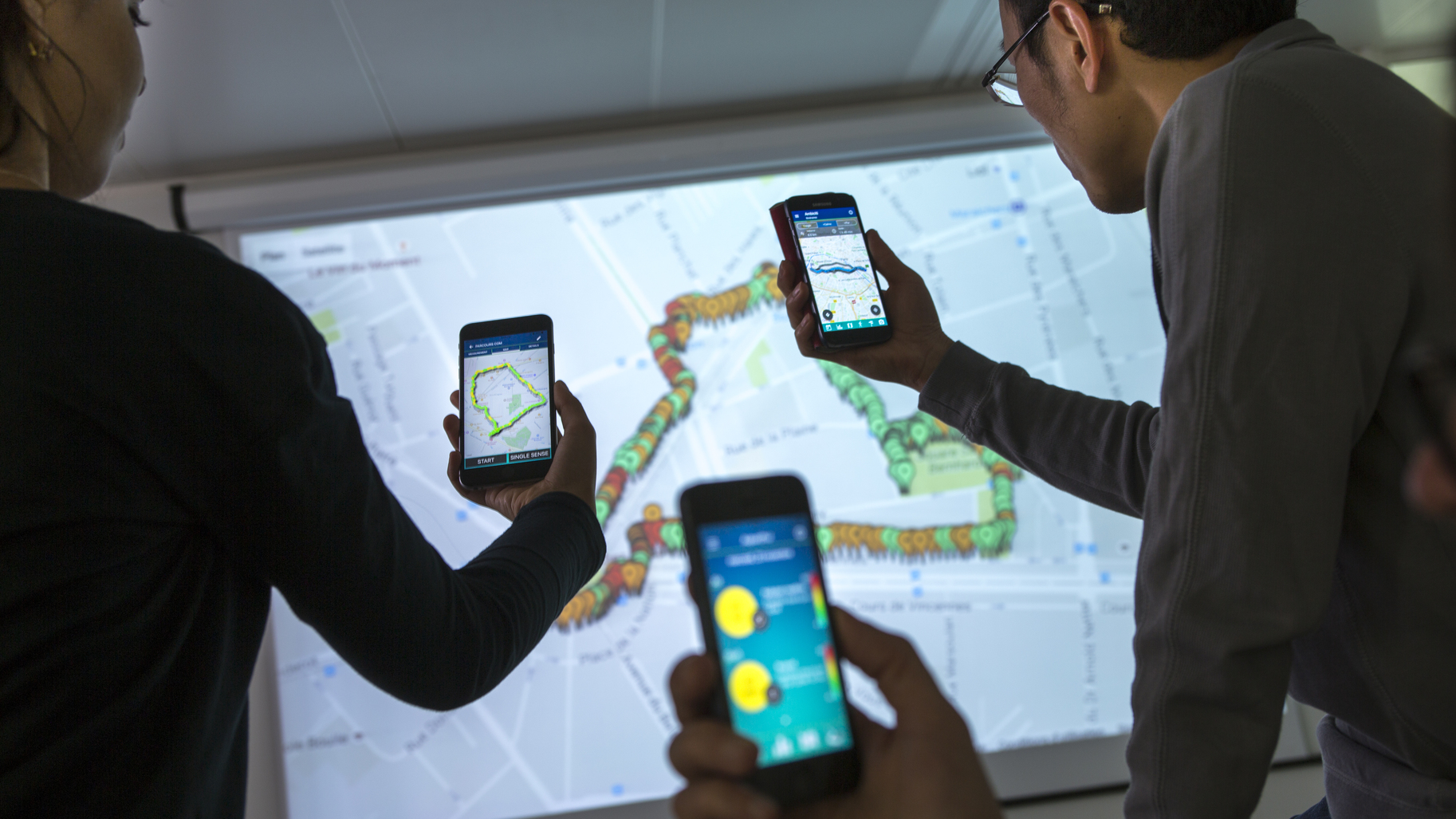Can digital help to promote civic engagement?
Date:
Changed on 25/04/2022

Prior to concerning herself with civic participation, Valérie Issarny, a director of research and member of the Mimove project team at Inria Paris, studied distributed software systems, a field she first started exploring in the early stages of her career back in the 1990s. In the early 2000s, at a time when personal digital assistants were emerging, the researcher began working on distributed mobile applications, long before smartphones became widespread.
Even back then, as she stresses, “interoperability between systems was an important area of research.” The goal was to develop infrastructure that would enable different applications to run correctly, with the capacity to communicate with each other where necessary. This field of research continues to be relevant, with the emergence of microservices: the development of applications using simple, pre-existing elements which are independent from each other but interoperable.
It was while on a long-term assignment in the USA, where she worked as a scientific director in charge of developing partnerships between Inria and Silicon Valley, that Valérie Issarny turned her attention to the application of her research to civic participation systems. Based at CITRIS between 2013 and 2018, it was there that the researcher met Professor James Holston, an anthropologist whose work involves studying the potential benefits of mobile applications for citizens. Together they designed AppCivist, a platform for creating apps in response to Civic Tech needs.
The way it worked was that activists on the ground would outline their needs, and be offered a range of tailored services created based on existing solutions capable of being used together. Fully aware of the fact that civic associations often have limited human and financial resources, they knew they needed a system that people would be able to get to grips with right away.
The first case study to emerge was the interoperability of different means of communication: how can you facilitate communication between individuals who prefer to use individual tools, without forcing them to join one single platform? In other words, “how can someone who uses email communicate with someone who prefers social media?”
In 2016, for the city's annual participatory budgeting campaign, Vallejo in California (which has a population of more than 116,000) gave the researchers the opportunity to launch a prototype: App-Civist-PB. The experiment was to prove fruitful: although not compatible with all social media platforms, the solution did make communication significantly easier, much to the delight of the organisers.
Various different calls for civic expression have since shifted at least partially online, from the vote on the participatory budget for the city of Paris to collaborating on political manifestos.
Although it is vital not to deny the digital divide, the researcher is keen to stress the benefits of the virtual approach. “Digital interfaces make it possible for certain types of people to participate - it’s easier to contribute via your PC or your smartphone while commuting than it is to attend a meeting in the evening”. The aim is not to replace face-to-face meetings, but rather to complement them through the use of virtual consultations.
But the positive impact digital could have on civic life goes way beyond simply facilitating communication. This is the focus of the work currently being carried out by Valérie Issarny and her fellow researchers from Mimove: William Aboucaya, a PhD student at Sorbonne University, and Rafael Angarita, a lecturer at the Institut supérieur d’électronique de Paris. Together they chose to focus on France’s Digital Republic Act.
Consultations around the Digital Republic Act
Announced in October 2016, the Digital Republic Act was drafted following a two-stage digital concertation process: a five-month national consultation which gathered close to 4,000 contributions, followed by the government presenting a draft bill “Digital strategy”, which was also subject to a consultation. Through this process, five new articles were added to the final version of the bill.
All contributions (proposals, comments, votes, etc.) were made accessible in open data format. This means that the researchers have access to both the content of proposals and interactions between contributions (showing for a comment what proposal it is in response to, for example). Represented in the form of graphics, scientists are able to use this data on interactions to identify how users of this network influence each other and to analyse the impact of the platform being used. Their research draws on these results, the goal being to design middleware for online participation platforms.
The team study data linked to individual contributions, which allows them to determine how a middleware solution could help shared proposals to emerge. This involves analysing the textual and semantic content of contributions in order to identify similarities, which are then used as a basis for putting contributors with similar viewpoints in touch with each other.
Eventually, it may even be possible to use these contributions to provide participants with a draft proposal that they can then work on together. In order to deal with the issue of semantic consistency, a collaboration was formed with Oana Balalau, a young researcher with the Inria project team CEDAR, specialising in the application of machine learning to natural language processing.
Owing to the way in which it enables mobilisation on a large-scale, overcoming technological heterogeneity, digital technology could help to promote participatory democracy. Far from confining us to the virtual realm, it actually encourages participants to interact with each other, and could help to breathe new life into civic engagement.